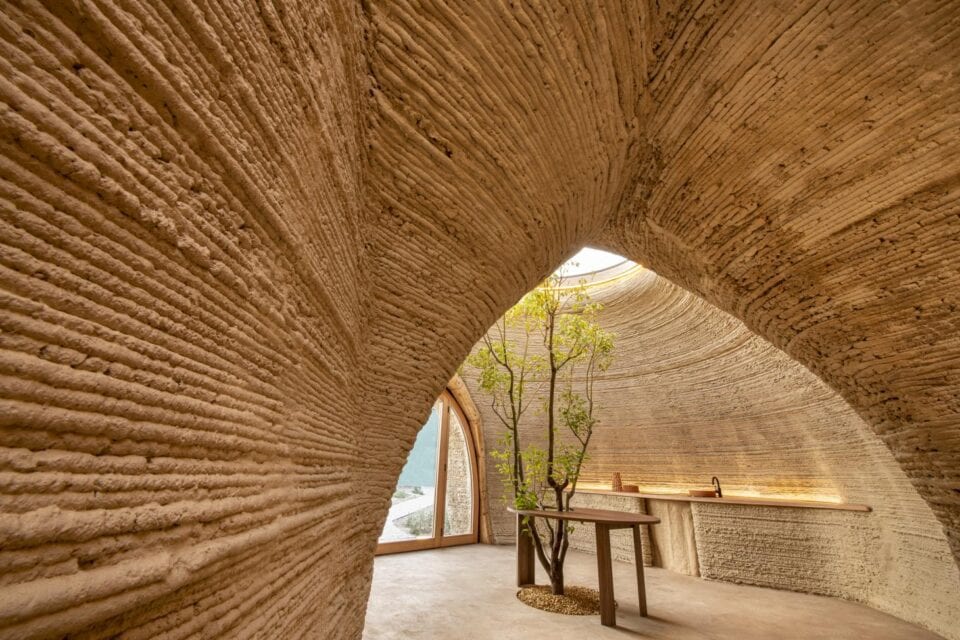The world’s first 3D-printed house has been unveiled in Massa Lombardo, Ravenna, made using only raw earth mixed with water. Christened TECLA (“Technology and Clay”), the structure was created by Mario Cucinella Architects in collaboration with WASP, a company specialising in large-scale 3D printing. The project represents a big step forward in the scale and ambition of 3D printing, marrying high and low-tech domestic architecture with potentially significant environmental implications.
TECLA’s structure is based on a curvaceous twin-bulbed design requiring no scaffolding. The method of creation harks back to millennia-old construction techniques involving mud and water – from rammed earth to straw composites and adobe bricks. Such approaches have been heralded as possible alternatives to carbon-intensive building materials, including concrete. Major architectural commissions have recently been proposed using these techniques. Adjaye Associates’ Thabo Mbeki Presidential Library in Johannesburg is one such example; its domed design is comparable to that of TECLA.
What sets this project apart is the combination of an ancient approach with on-site 3D printing, which has been used to create – the architects hope – a prototype for many more structures. The process took only 200 hours, using 60 cubic metres of earth. Mario Cucinella Architects envisages the printed house as a potential solution to emergency shelter needs, meeting the demand for low-income residential architecture in cities around the world. The house is a zero-waste product, made using free, locally sourced materials, with the composition of the earth mixture based on local climatic conditions. As such, the structure and appearance of a TECLA house will differ depending on where it is printed, taking into account regional insulation and ventilation requirements.
Mario Cucinella states: “TECLA represents a new building paradigm, the foundation for a new sustainable way of living on our planet. The solutions to many of the problems faced by our planet Earth can be found in the earth itself.” The project has been underway since 2019, growing out of research on solutions to homelessness in a range of global climates undertaken at the School of Sustainability, a postgraduate centre founded by Cucinella in 2015. The company’s previous projects include the Centre for Sustainable Energy Technologies at the University of Nottingham and the Kuwait School in Gaza, created in collaboration with the United Nations for Palestinian refugees.

Although 3D printing has only entered the public imagination in the last decade, it has a history stretching back to at least the 1980s. It currently has a range of uses, from the manufacture of jet engines to food and fashion. A great advantage of the technology is its capacity to fabricate designs that would be too intricate to produce by hand or other automated processes. This has allowed 3D printing to be used in facial reconstruction surgery, for example, whilst museums across the world have used 3D printers to produce replicas of valuable artefacts for display and reference. The ecologically friendly aspects of the technology, which produces very little waste material, have also been heralded.
Find out more here.
Words: Greg Thomas
All images courtesy Iago Corazza.







